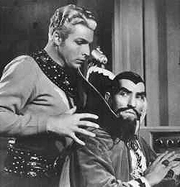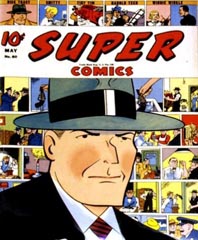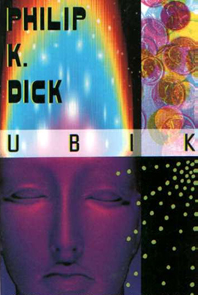 In the first part of our extensive interview with publisher Anthony Tollin (yesterday), we learned how a story that apepared in The Shadow Magazine some two and a half years prior to Batman’s debut, proved to me the template for the Cpaed Crusader’s debut in Detective Comics #27. This is fodder for the historians who have studied what Bob Kane and Bill Finger each brought to the table during the creation of DC’s second successful super-hero. The story will be publsihed this summer in the ninth volume of Shadwo facsimiles being publsihed by Tollin.
In the first part of our extensive interview with publisher Anthony Tollin (yesterday), we learned how a story that apepared in The Shadow Magazine some two and a half years prior to Batman’s debut, proved to me the template for the Cpaed Crusader’s debut in Detective Comics #27. This is fodder for the historians who have studied what Bob Kane and Bill Finger each brought to the table during the creation of DC’s second successful super-hero. The story will be publsihed this summer in the ninth volume of Shadwo facsimiles being publsihed by Tollin.
Greenberger: How will you celebrate this discovery in volume nine?
Tollin: By pairing it with Doc Savage #8, which showcases Doc’s utility belt (which Bill Finger acknowledged was the inspiration for Batman’s). By the way, Doc’s utility belt was introduced by ghostwriter Harold A. Davis, Newsday‘s first Managing Editor. (Davis ran the paper through its first four years, and was succeeded by Alan Hathway, another Doc Savage ghost, who headed the paper for 30 years. Will Murray also provides a dynamite article on the real-life inspiration for both Doc Savage and The Avenger—Richard Henry Savage. The real Savage was a fascinating, larger-than-life American hero, a West Point graduate who served in the U.S. and Egyptian armies before joining the diplomatic corps. In his later years, he wrote more than 40 novels, many of which were based on his own adventurous life. Street & Smith published one of them in 1898, and Henry William Ralston, a recent addition to the Street & Smith staff, never forgot the charismatic Savage. Decades later, as S&S’ circulation manager, he launched The Shadow Magazine and developed the characters for Doc Savage and the Avenger, basing elements of all three pulp superheroes on Richard Henry Savage’s adventurous life.
And The Shadow #10 will be a super-villains issue, featuring The City of Doom (the second Voodoo Master story which inspired Batman’s Doctor Death storyline), The Fifth Face (featuring a master of disguise called Five-Face) and "The Immortal Murderer," a 1944 Alfred Bester Shadow radio script which pits The Shadow against an immortal Neanderthal (and yes, it was a rewrite of Alfie’s earlier Vandal Savage story from Green Lantern #10). Along with Sax Rohmer, Walter Gibson pretty much originated the concept of super-crime, and the villains he called super-crooks. In 1933, Gibson introduced a slew of super-villains including The Red Blot, The Wealth Seeker, The Black Falcon and Gray Fist. Others soon followed including The Cobra and Dr, Rodil Mocquino, the Voodoo Master; and years later, Shiwan Khan. Early on, Gibson realized that a superhero like The Shadow needed something more than garden-variety crooks and gangsters to test his mettle, just as Jerry Robinson would later realize that Batman needed his own Moriarty when he created The Joker. In fact, The Shadow’s Dr. Mocquino appears to have inspired Batman’s first recurring villain, Doctor Death.
Greenberger: What else will be in the book?
Tollin: The Shadow #9 , our special "Foreshadowing The Batman" volume, reprints "Lingo," one of Walter Gibson’s all-time classics which inspired the Batarang, Theodore Tinsley’s "Partners of Peril" (the novel that inspired Detective Comics #27’s "The Case of the Chemical Syndicate," plus a bonus Tinsley novelette: "The Grim Joker" (featuring a murderous, white-faced crime clown). Next spring, we’ll be releasing a special "Foreshadowing The Joker" volume that will reprint Ted Tinsley’s "Death’s Harlequin" and the 1940 Shadow radio script, "The Laughing Corpse." The latter, broadcast six weeks before Batman #1 debuted, featured a chemical that caused victims to laugh themselves to death, quite similar to The Joker’s original M.O. "Death’s Harlequin" was on sale the same month as Detective Comics#27 (when we can be pretty sure that Bill Finger was paying close attention to The Shadow Magazine) and pitted The Shadow against a murderous clown who like The Joker was a vision of madness: "The thin lips were drawn away from skull-like teeth. The cheeks were sunken and leathery. Dank black hair lay matted thinly on a baldish scalp the color of old parchment. A living corpse in the costume of a gay Harlequin! With a wide-muzzled gun. And a jeering laugh that made the silence in the room crawl with menace."
Greenberger: Any idea what DC’s reaction was when you made them aware of this?
Tollin: Actually, Paul Levitz was quite interested and very cooperative with my request to reprint panels from Detective Comics #27 in the historical articles. Paul recognized that his story was part of Batman’s history, and basically just wanted some copies for DC’s library.
Greenberger: Do you think this will change people’s perceptions of Batman’s origins?
Tollin: Actually, my hope is that it alters people’s perceptions of The Shadow. Finger and Kane As I observe in my supporting historical article: "The Shadow was a master of disguise. Perhaps his greatest masquerade was transforming himself into Batman, and in that guise continuing his reign as the world’s greatest detective superhero into the twenty-first century."
I find it quite interesting that at nearly the same time that DC Comics was taking legal action to eliminate Victor Fox’s Wonderman because it was an imitation of Superman, they were about to launch a new character who was a far more blatant imitation of The Shadow, right down to the plots, bat-motif, surroundings, villains and supporting players. At that time, The Shadow was still far more prominent than the recently-launched Superman, since he was featured in the only twice-monthly hero pulp as well as the weekly radio thriller, which was the #1 daytime series in the radio ratings. As pulp publishers of the Spicy line, Harry Donenfeld and Jack Liebowitz and their editors had to realize that Batman was based on The Shadow, even if they didn’t know that the plot of the first Batman story was a recycled Shadow novel.
While I want to give proper credit to Walter Gibson and Theodore Tinsley for their part in inspiring Batman, I’m certainly not out to tarnish Batman or Bill Finger. I have no animosity towards Batman. I’m actually very fond of the character, and Adrienne [Roy] and I used to jokingly refer to our New Jersey home as "the house that Batman bought." While Batman started out as a clone of The Shadow, the feature came into its own with the introduction of Robin, which added a touch of humanity to the formerly grim Batman that was lacking in The Shadow. Robin was almost certainly inspired by Junior Tracy, but it was just what the feature needed at the time. And of course, the succession of wonderful villains that began with The Joker and Catwoman in Batman #1 and continued with The Penguin, Two-Face, The Scarecrow, Clayface and The Riddler made Batman a very special feature. While Finger’s first Batman story was a blatant swipe of a Shadow novel, he quickly developed into one of comics’ greatest and most-innovative scriptwriters.
Greenberger: Are there other parallels between The Shadow and Batman?
Tollin: Certainly. I’ve recently spotted several more early Bat-stories that were lifted from Shadow novels. Readers will be able to compare for themselves when I reprint "Serpents of Siva" in The Shadow Volume 12. The Golden-Age Batman lifted The Shadow’s suction cup climbing device, autogiro, and "yellow boomerang," along with the friendship with the Gotham police commissioner. But the most lasting influence is to be found in Batman’s talent for escaping deathtraps, which started in his debut story when he escaped from the same glass gas chamber that The Shadow escaped from in "Partners of Peril." This mastery of escape was The Shadow’s most lasting legacy to Batman, a legacy from Houdini to his biographer/ghostwriter Walter Gibson and on to Bill Finger’s Batman via The Shadow.
Greenberger: How is this line performing and what’s coming after this?
Tollin: Each Shadow and Doc Savage volume has outsold the previous, and sales are still building. This is most unusual within the Diamond and comic collectors market, where sales usually drop after the first issue. This seems to indicate that our sales are actually generated by people who are actually reading and enjoying the books, and encouraging others to do the same.
The Shadow and Doc Savage reprints are available from most full-service comic stores, and also Borders and some Barnes & Noble stores. They are also being tested in double-packs at a small number of Costco and Sam’s Club outlets. They’re also available directly from me (sanctumotr@earthlink.net or www.shadowsanctum.com), with six-issue subscriptions available within the USA for $72 via first class or $66 via media mail. They’re also available in Manhattan at The Mysterious Bookshop, and in Minneapolis at Dreamhaven Books and Uncle Hugo’s Science Fiction, The books are also available individually via mail order from me, and from Bud Plant, Vintage Library, Adventure House, Mike Chomko, and in Canada from Girasol Collectables,
Greenberger: Beyond Doc Savage and The Shadow, are there any other pulp figures you’re looking to resurrect?
Tollin: The Avenger and Nick Carter, and hopefully The Whisperer as well. Do you think readers would like to discover the secret life of Police Commissioner James Gordon, aka The Whisperer?
Greenberger: With Moonstone’s recently announced Spider anthology and your facsimile reprints, why do you think people remain interested in the pulp heroes?
Tollin: Hopefully. It definitely seems to be the case. But there are many pulp heroes that always seem to be with us. Don’t forget that Zorro, Tarzan and Conan all originated in the pulps, as well as Sam Spade and Philip Marlowe.
Greenberger: Anything else you’re working on?
Tollin: Well, two double-novel pulp reprints a month is keeping me pretty busy, and this will only increase when The Avenger and some of the other S&S characters are added as quarterlies. I am expanding a Shadow coffee table history that I wrote a few months back. And at this year’s Friends of Old-Time Radio Convention, I’ll be directing an X-Minus One cast reunion. We’re thrilled that this year we’ll be reuniting the series’ scriptwriters, Ernest Kinoy and George Lefferts, who haven’t seen each other in 40 years. Kinoy of course went on to win an Emmy for his screenplay for the landmark TV miniseries Roots.
Artwork copyright DC Comics. All Rights Reserved.
 Now, where were we…?
Now, where were we…? If you have ever suffered through one of my comics writing classes, or were lucky enough to take a Robert McKee film writing course, you know that some professional wordsmiths set a lot of store by structure, and that the most reliable structure is called the three act structure. (For more, and better, on this, see the recommended reading below.) I’m not about to presume to teach a class here, but most briefly – the three-act structure: 1, Something happens to cause the hero to act. 2. The problem gets complicated. 3. The hero resolves the problem.
If you have ever suffered through one of my comics writing classes, or were lucky enough to take a Robert McKee film writing course, you know that some professional wordsmiths set a lot of store by structure, and that the most reliable structure is called the three act structure. (For more, and better, on this, see the recommended reading below.) I’m not about to presume to teach a class here, but most briefly – the three-act structure: 1, Something happens to cause the hero to act. 2. The problem gets complicated. 3. The hero resolves the problem.

 In the first part of our extensive interview with publisher Anthony Tollin (
In the first part of our extensive interview with publisher Anthony Tollin ( Every so often historians find something that appears to be the final piece to a puzzle.
Every so often historians find something that appears to be the final piece to a puzzle. (If) you’re…young; you don’t remember a time when continued stories were rare. But until Stan Lee made them standard procedure at Marvel in the 1960s, they were next to unheard-of.
(If) you’re…young; you don’t remember a time when continued stories were rare. But until Stan Lee made them standard procedure at Marvel in the 1960s, they were next to unheard-of. Which brings us to the pulp magazines, a publishing form that began about 1910 and was one with the dinosaurs by the middle 50s. A lot of these cheaply produced entertainments featured continuing heroes. (We’ve discussed perhaps the greatest of them, The Shadow, in this department
Which brings us to the pulp magazines, a publishing form that began about 1910 and was one with the dinosaurs by the middle 50s. A lot of these cheaply produced entertainments featured continuing heroes. (We’ve discussed perhaps the greatest of them, The Shadow, in this department 
 When we’re in a somber mood, which is an easy kind of mood to be in these days, we hope that Jerry Siegel and Joe Shuster were not prophets. Joe and Jerry were, of course, the creators of Superman, and way back in 1938 they told what’s become known as Superman’s origin story.
When we’re in a somber mood, which is an easy kind of mood to be in these days, we hope that Jerry Siegel and Joe Shuster were not prophets. Joe and Jerry were, of course, the creators of Superman, and way back in 1938 they told what’s become known as Superman’s origin story. All hail to thee, Pulpus. Praised be thy name.
All hail to thee, Pulpus. Praised be thy name. Paul Levitz led off the event by recalling the first official memorial over which the comics family presided, that of Wally Wood. (The last one Robin and I attended before this was ten years ago, for Kim Yale. While I don’t actually enjoy these events, I’ve found great comfort in like-minded folk coming together to salute one of their own and thus strengthen the bonds that exist between us all.) Paul suggested the memorial tributes be done "open mike" style, where anyone who wished to share a story about Dave could come to the podium and speak about him, with Dave’s widow Paty being last to speak.
Paul Levitz led off the event by recalling the first official memorial over which the comics family presided, that of Wally Wood. (The last one Robin and I attended before this was ten years ago, for Kim Yale. While I don’t actually enjoy these events, I’ve found great comfort in like-minded folk coming together to salute one of their own and thus strengthen the bonds that exist between us all.) Paul suggested the memorial tributes be done "open mike" style, where anyone who wished to share a story about Dave could come to the podium and speak about him, with Dave’s widow Paty being last to speak. Neither did I. The creator of Cerebus the Aardvark has his own little space on the web called the
Neither did I. The creator of Cerebus the Aardvark has his own little space on the web called the  Mr. Robert Joy, of DC Comics, informs me that Green Arrow and Black Canary are getting married this summer. Allow me to assume a Victorian mien and sniff, “About time.”
Mr. Robert Joy, of DC Comics, informs me that Green Arrow and Black Canary are getting married this summer. Allow me to assume a Victorian mien and sniff, “About time.” Back in the halcyon Sixties, when respectability was but a distant glimmer on science fiction’s horizon (and comics were still mired in disrepute), the editor of an SF magazine asked me to review a novel by Philip K. Dick. It wasn’t my first encounter with Mr. Dick; back in St. Louis, before I’d migrated east and gotten into the funny book racket, I’d read a roommate’s copy of Man in the High Castle and found it interesting. I told the editor, sure, be happy to. The book was Galactic Pot Healer. I didn’t like it and wrote the review accordingly.
Back in the halcyon Sixties, when respectability was but a distant glimmer on science fiction’s horizon (and comics were still mired in disrepute), the editor of an SF magazine asked me to review a novel by Philip K. Dick. It wasn’t my first encounter with Mr. Dick; back in St. Louis, before I’d migrated east and gotten into the funny book racket, I’d read a roommate’s copy of Man in the High Castle and found it interesting. I told the editor, sure, be happy to. The book was Galactic Pot Healer. I didn’t like it and wrote the review accordingly.








